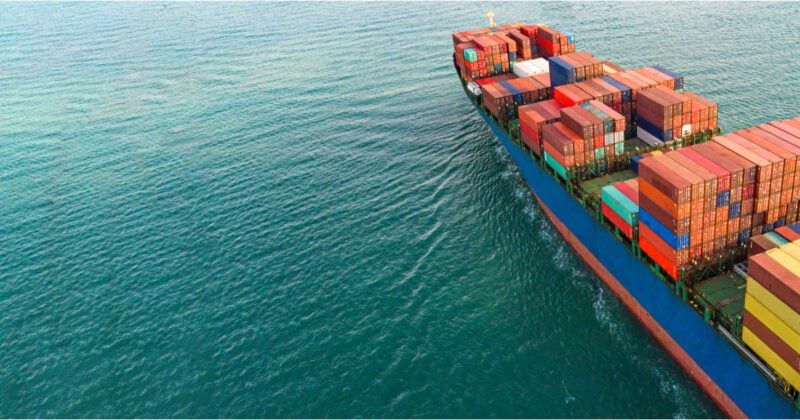一年多以來,標有“恢復常態”和“集裝箱運輸”的門型柱一直都處於不斷退縮的模糊狀態。
2020年最後一個季度的“季節性平靜”未能實現。 2021年農曆新年本應是另一個重置的機會,但調度可靠性沒有出現任何重大改善,運費也沒有出現實質性的下降。
2021年第三季度是承運商高管們的下一個目標,希望能讓設備和船隻重新就位。然而,在旺季導致價格進一步上漲和服務中斷之前,整個夏季的需求仍然很高。
航運分析公司Sea-Intelligence的數據顯示,8月份全球船期的可靠性降到了33.6%的歷史最低點。航運僵局最明顯的跡像是9月底在長灘和洛杉磯碼頭外排起了70艘集裝箱船的長隊。在北美最重要的集裝箱港口,一些船隻在排隊等候卸貨的過程中滯留了三個多星期。
但是,港口擁擠的問題並不局限於美國西海岸。 Vessels Value報告顯示,上個月有400多艘集裝箱船在全球各地的港口排隊。而在9月份,這種情況每天都在惡化。
將重點轉移到關鍵的東西方貿易上
由於從亞洲到歐洲和美國的主要東西方航線的費率上升,承運商在尋求利潤最大化的過程中對運力進行了轉移。
根據最新的敦豪海運市場更新報告,部署在亞洲-歐洲和亞洲-北美航線上的全球集裝箱船隊的份額從2020年7月1日的34.6%增長到2021年7月1日的41.4%。同時,跨太平洋地區的運力同比增長30.6%。
“遠東-中東貿易的運力短缺不僅是港口擁堵的結果;許多船舶被重新部署到東西方的主要航線,以滿足強勁的貨物需求,並希望運費能夠得到緩解,”敦豪全球貨運部負責人Dominique von Orelli表示。
專注於關鍵的東西方航線的戰略對承運商來說已經取得了巨大的成功,現在預計這些承運商在 2021年的稅息前收益將達到1500億美元(1300億歐元)。然而,船舶和設備被吸引到最有利可圖的航線上後,其他地方的托運商也感受到了影響。
例如,跨大西洋航運的運費已經飆升,而遠東-中東航線的運力卻在降低。目前,由規模最大的集裝箱公司經營的中國中部-中東專線的服務機構中,沒有一家能夠提供每週航班。 9月14日,這些服務機構部署了29艘船,而根據Alphaliner的計算,需要50艘船才能滿足預估的時間表。
因此,這條航線上幾乎有一半的航班不得不停航,因為這些服務機構缺乏40%的預估運力。除此之外,還需要更多的船隻,因為港口的擁擠和錨地等待時間過長,船隻無法在七週內完成一次往返行程。
在設備短缺的情況下,與報酬較高的跨太平洋東行和遠東西行航線一樣,相同的集裝箱之間也出現了持續的競爭。 von Orelli說道:“隨著經濟的回升,亞太地區到拉丁美洲的服務都出現了強勁的需求,所以重點就是要有足夠的設備來滿足需求。”
對2022年保持謹慎的樂觀態度
隨著需求沒有顯示出喘息的機會,不斷出現的衝擊將運費拉高,並從運輸網絡中奪走了運力,現在只能將樂觀的想法轉移到2022年。
“隨著更多新集裝箱的湧入,全球的集裝箱供應正在改善,”敦豪全球貨運物流亞太區行政總裁Kelvin Leung指出。
但我們也應該謹慎行事,因為在中國新年和北京冬奧會之前,中國的生產線可能會受到影響。因為中國的新年和冬奧會都在明年2月份,所以工廠是有可能減少排放的。
“早在2008年北京奧運會之前,我們就看到中國為了減少排放和改善空氣質量而進行了停產。在冬奧會之前,我們可能再次看到這種情況,這是有可能的,”von Orelli表示。
因此,隨著客戶為迎接中國新年而將工廠關閉前會重建全球庫存,預計對中國出口的需求將呈現增加趨勢。然而,產出有可能在前期受到限制。
Leung補充說,雖然有強烈的需求,但在2023年之前不會看到有大量的船隻湧入市場。 “因此,我預計許多供應鏈挑戰將在2022年繼續存在,新冠肺炎疫情之前的狀態將不會出現。但我確實認為,突破當前的一些瓶頸後,情況會有所改善,”Leung表示。
為了做好充分準備,Leung指出,在供應鍊和生產計劃方面的提前規劃是至關重要的。 “除了提前規劃之外,客戶還應該了解一下他們所有的物流選擇。 他們越能預測自己的需求,我們就越容易幫助他們確保運力,並確保他們獲得一流的服務,”Leung說道。






 繁體中文(香港)
繁體中文(香港)